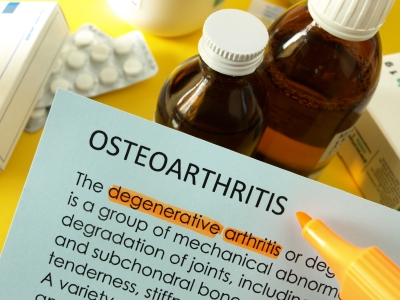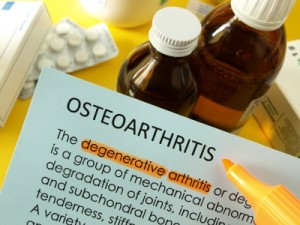According to the Centers of Disease Control and Prevention, types of conditions such as fibromyalgia, gout, and lupus fall under the arthritis category along with rheumatoid and osteoarthritis. Osteoarthritis is the most common and an estimated 50 million US adults which is about 1 in 5 report having doctor-diagnosed arthritis.
Osteoarthritis is characterized by the degeneration of cartilage and its underlying bone with in a joint and bony overgrowth often called the wear and tear arthritis state by the Mayo Clinic. The joints that are generally affected are the knees, hips, and those in the hands and spine. The disease usually begins after the age 40 and there is no cure. Women have higher rates than men after age 50.
The Arthritis Foundation claim people with arthritis often claim they can predict the weather, based on their joint pain level, and with good reason. Studies show a variety of weather factors can increase pain, especially changes. Watch for any changes in
· Barometric pressure (especially falling)
· Temperature (especially lowering)
A study from Tufts University in 2007 found that every 10-degree drop in temperature corresponded with an incremental increase in arthritis pain. In addition, relatively low barometric pressure, low temperatures and precipitation can increase pain. Researchers aren’t sure why this happens. They suspect certain atmospheric conditions increase swelling in the joint capsule.
The Arthritis Foundation also recommends that a healthy weight is important to managing the disease as well as two thirds of your daily diet to include fruits and vegetables. Eating cherries may help with arthritic pain. A study showed that cherries reduced gout flares. Liquid cherry extract found in health food stores can also provide the same benefit. Because of omega-3 fatty acids in seafood, these may also reduce inflammation.
Water exercise also helps to relieve symptoms of hip and knee pain. By promoting muscle strength, we can also ease pain. Stretches are also important, not keeping the joints in the same position. Appropriate free weight exercises that are not too strenuous also build muscle. Biking can be another good choice for people with arthritis. However, always check with your doctor first who can give you the best exercise plan for your individual condition.
Meditation can also help to ease pain since the philosophy is not about changing the pain but how our mind reacts to it. Taking yourself away from the pain and focusing on relaxation is the purpose of meditation.
Mayo Clinic also suggests through recent studies that acupuncture, tai chi and yoga can also relieve pain as well as nutritional supplements such as glucosamine. But verify allergies to such supplements with a doctor before use. Over the counter creams may also relieve joints that are close to the skin such as your fingers.
Rest at least 12 to 24 hours if pain is intense and medications such as Acetaminophen specifically for arthritis pain can help. But if truly advanced, it may be necessary for lubrication injections, realigning bones and joint replacement.
Finally, lack of sleep will always increase pain so it is not unusual for those with osteoarthritis to function better on 8-10 hours of solid sleep per day.
Osteoarthritis can affect your life insurance rates depending on the severity of the disease. Standard rates can be available depending on treatment so if exercise, healthy diet and over the counter medication can manage your day effectively, your rates can be reasonable. However, it is always best to be specific about your symptoms when discussing this condition with an insurance specialist.
Quality diet, exercise and rest is the key to extending good health. Focus in the New Year to build a better lifestyle plan especially for those suffering from any chronic condition that includes a life insurance policy now. Chronic conditions escalate if you don’t follow a strategic plan and that can cost you; not only the ability to manage your life but in higher life insurance premiums.













